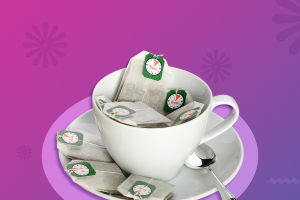Flower arranging is an art that enhances one's aesthetic ability in art.
Generally speaking, flower arranging has the following benefits.
1. Improve cultivation Improve people's spiritual and cultural quality and artistic cultivation.
2. Beautify the environment and increase interest Flower arrangement works can beautify the environment of homes, offices, hotels, banquets, etc.
3. Improve our aesthetics and our own temperament.
In fact, flower arrangement is a very suitable hobby for female friends, if women can learn to arrange flowers, then inevitably our aesthetics will also have some improvement.
Flower arranging requires flowers, scissors, clay, aluminium wire and a vase.
1.As long as the flowers have ornamental value, they can be kept in water for a long time or they are dry and do not need to be kept in water for a long time.
They can be cut down and used in flower arrangements.
Of course, the material for flower arrangements is not only limited to live plant material.
But sometimes some dead branches and dried inflorescences, fruit sequences, etc. also have a beautiful form and colour and can also be used for flower arrangements.
2. Scissors: first of all, remove the flower remnants, cut them to length according to the different styles and bend them to suit the composition.
3. Aluminium wire: In order to make the floral gesture according to your vision, generally take two thicker branches at the mouth of the vase.
According to the length of the diameter of the mouth, and cross them over the mouth of the vase for fixing.U
4. Vases of various textures can be used to insert fresh cut flowers directly into the vase and fill with water for maintenance.
A good quality glass vase with low thermal conductivity is more suitable than a vase made of iron or plastic.
Transparent glass, especially in the hot summer months, insulates from heat and makes it easy to observe the turbidity of the water.
5. Flower clay, which can be divided into dry flower clay and wet flower clay.
Dry clay is used for fixing permanent flowers and dried flowers, while wet clay is used for fixing flowers.
You can use branded flower clay, which is slightly more expensive, but the quality is guaranteed and the water absorption is strong.
There are certain techniques to follow when arranging flowers.
First of all, the flower combinations should be staggered in high, low, front and back, not all in the same straight line or on the same contour, but let them fall in and out of each other's heights and undulations.
Interspersed in and out of the front and back, organised and layered in the whole shape of the upper, middle and lower and front, middle and back parts, forming an orderly and harmonious rhythm to ensure that the work has obvious multi-level changes and a strong sense of three-dimensionality.
Secondly, the floral material should be sparse and dense in the arrangement, with natural variations.
Finally, the upper, lower and left and right flower branches should echo each other around the main strip, so that the flower branches remain integral and balanced with each other.
Whether it is a single piece or a combined piece, it should show its wholeness and sense of balance.
The flowers should echo around the centre of gravity, and be coordinated in spirit, reflecting the wholeness of the work, but also maintaining the balance of the work.


